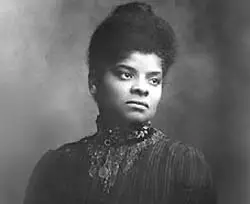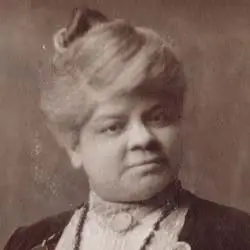Ida B. Wells
Ida B. Wells was the daughter of American slaves and was born in Mississippi in 1862 in the middle of the Civil War. Her desire for education and equality led her to be known as a famous journalist, outspoken political commentator, and activist in the anti-lynching movement of the 1890’s. Ida’s ideals were expressed in a time when women did not speak up and people were not accustomed to having a Black woman as an independent leader.


Wells’ parents were active participants in the belief of education for freed slaves. Ida’s parents were killed in the Yellow Fever epidemic and at the age of 16, Ida was forced to care for her brothers and sisters. Given that she had a basic education, she took on a teaching job to support her family. Ida took the children to live with an aunt in Tennessee and she continued her education by attending Nashville’s Fisk University.

A situation that occurred on a train acted as the first spark for Ida’s eventual activist life. She had purchased a ticket for the ‘ladies section’ of the train and had ridden in that area before. When the conductor told her she couldn’t ride, he physically dragged her off the train. Ida took the train company to court and while she won in the lower courts, she eventually lost the suit. Ida wrote the story up in a local church newspaper. She eventually published other articles in Black American periodicals and newspapers and soon became the owner of Memphis Free Speech and Headlight, and, later, of the Free Speech.

Ida’s political views of freedom were somewhat radical for her day and, as head of her family, she considered women’s issues to be very important and felt women could do everything that men could do. Ida was a critic of the segregated schools in the city and was at one time fired from her job because of her opinions. She also became an activist to fight against ‘lynching’ (hanging) after a friend and two of his associates were murdered, simply because their business took customers away from white businesses.


Wells took the topic of lynching very personally and began travelling throughout the southern states, collecting and then writing stories about lynching as a method of murder for the Black community, often overriding any legal laws. Once she wrote about these horrible situations, a mob attacked the publication and destroyed all of the equipment, threatening that she would be murdered if she returned to Memphis.

Ida decided to stay in the northern states to continue her cause and wrote an in-depth report for an African-American newspaper, the New York Age. To enlist support, Ida traveled and lectured among both Black and whites that were reform-minded. She used her talent for writing to create a pamphlet called “The Reason Why the Colored American is Not Represented in the World’s Columbian Exhibition”, which was supported and funded by Frederick Douglass, a well-known freed slave and editor/lawyer Ferdinand Barnett. In 1893, Ida published a personal examination of American lynchings call “A Red Record”.

In 1898, Wells had become a famous writer and she took the anti-lynching topic to President McKinley in the hope that he would assist in making reforms. She continued her effort for women’s rights in the Black American community by forming the National Association of Colored Women and later attended the conference for what would eventually become the NAACP (National Association for the Advancement of Colored People). She is considered to be one of the founders of the NAACP, but later distanced herself from it, as she felt it wasn’t organized enough.

Ida contacted President Woodrow Wilson as part of her work in the National Equal Rights League which was founded to help in the rights for all women, to ask for his help in ending discrimination practices for women in government jobs. She continued to start the first African-American kindergarten and joined the fight for women’s suffrage. Although she made an unsuccessful bid in 1930 for the state senate, Wells name was a well-known force in many activist circles.




